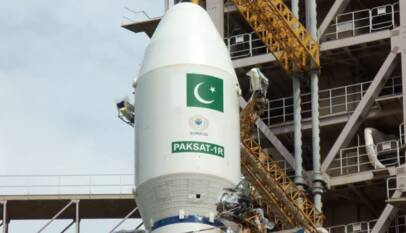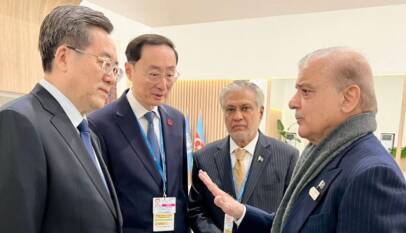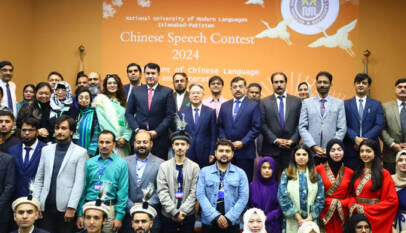CPEC progressing well despite all odds
Mr. Ather Naqvi, a renowned journalist writes that the Belt and Road Initiative’s main project is the China-Pakistan Economic Corridor (CPEC). He mentions that CPEC projects were initially valued at $47 billion, but by 2021, they were worth $62 billion. He adds that Pakistan sees enormous potential for development in the agriculture, energy, industrial, and transportation sectors. Infrastructure projects are critical to a growing country’s development. The Sukkur-Multan motorway is the CPEC’s largest transportation infrastructure project. Another economical and decent commuting alternative in Lahore is the Orange Line Metro Train. He concludes that all these developments will have a positive impact on the standard of living of the common man in Pakistan.
Is the China-Pakistan Economic Corridor (CPEC) going as planned? Since it was launched in 2013, the flagship project of the Belt and Road Initiative (BRI), has been under the watchful eye of regional and global powers, and an occasional target for terrorists.
Pakistan has hinged its economic progress on the rapid implementation of CPEC. Initially valued at $47 billion, the value of CPEC projects was worth $62 billion as of 2021. Since 2018 onwards, however, it was not been smooth sailing under the PTI government as far as work on CPEC was concerned. While a number of armed attacks on Chinese officials working in Pakistan over the years failed to make a dent in the progress of the project, work on the corridor seemed to have hit a snag under the PTI government.
We have also seen recent attacks on Chinese citizens in Pakistan. The suicide bombing at the Karachi University Confucius Institute on April 26 and earlier at a bus carrying Chinese workers near the Dasu hydropower plant in Khyber Pakhtunkhwa in July 2021 are a case in point.
The government of Prime Minister Shahbaz Sharif has vowed that it will take CPEC forward with a new vigour. Foreign Minister Bilawal Bhutto Zardari has also reaffirmed Pakistan’s resolve to further strengthen its strategic ties with China, including through the implementation of CPEC. Bilawal has emphasised that Pakistan will increase cooperation with China through CPEC to not just achieve Sustainable Development Goals (SDGs) but also to participate in the work of the Global Development Initiative (GDI) Group of Friends for a peaceful and shared future.
With the change in the political setup, the change in the pace of development is discernible. After the tables were turned on the PTI government and a new one was formed with the PML-N’s Shehbaz Sharif as the prime minister, the newly appointed planning minister, Ahsan Iqbal, was quick to announce a security review meeting to be held every month on CPEC and urged that CPEC could enable Pakistan to become an industrial economy. Chairing a meeting, he lamented that the momentum between 2013-18 could not be sustained by the PTI government. He also pointed to the fact that Pakistan’s side of CPEC’s Joint Working Group on Security did not hold regular meetings.
It is in this backdrop that soon after coming to power, the new government announced it was going to abolish the CPEC Authority, declaring it a waste of resources and a hurdle in the speedy implementation of the CPEC. Planning Minister Ahsan Iqbal’s first briefing on the state of CPEC blew the lid off the claims of the previous government that everything was fine as far as the project was concerned. He was told that over 37 per cent of the installed capacity of the CPEC power projects, or 1,980 megawatts, was out of order due to non-payment of dues to the Chinese investors. He was informed that the total receivables of the 10 Chinese IPPs had increased to Rs300 billion.
Since the incumbent government has only limited time before the general elections are announced after it completes its tenure – which it has said it will till now – it can at least work to move things in the right direction for the next government as far as CPEC is concerned. Besides other areas, Pakistan sees great potential for development in its agriculture, energy, industrial and transport sectors under the project. Pakistan can learn from the Chinese experience of modernising its agriculture sector, focusing on corporate farming, new seed development for increasing crop yield, introduction of new varieties of agriculture products, and establishing agro-industry. Experts have proposed agri technology zones to enhance cooperation in this field. The cooperation between Faisalabad Agriculture University and Chinese universities is a very good starting point.
Another good news is that the Global Innovation Centre (GIC), an organization based in China, is planning to set up an office in Pakistan and a China-Pakistan Trade, Energy, and Investment Centre in the organisation’s Shenzhen office. GIC, which works in the areas of international cooperation in technology; incubation of new businesses; scientific and technological industrial zones and training of entrepreneurs, has offices in ten countries, including the US, UK, Indonesia, and Thailand.
China’s cooperation with Pakistan in the field of solar energy is also a ray of hope for replacing coal-powered energy gradually. In April this year, C&D Clean Energy, based in China, announced a partnership with Integra Solar in Pakistan for panel supply chain services. According to the reported memorandum of understanding, C&D Clean Energy will provide Pakistan’s company with integrated supply chain services of 100MW solar modules in 2022. There’s a lot of room for cooperation in this field at a time when rising temperatures is a global environmental concern.
Infrastructure projects are a mainstay for the progress of a developing country. The 392 kilometres-long Sukkur-Multan motorway, for instance, has been regarded as a part of the largest transport infrastructure project of CPEC. Passing through rural and mostly under-developed areas of Pakistan, the project provided jobs to about 30,000 people at one time and quick transportation for villagers.
In another development, in April this year, 120 hybrid buses left China for Karachi and other cities of Sindh. These buses have now reached Karachi. This development is expected to address one of the most serious problems faced by the people in Karachi – lack of public transport. The Orange Line Metro Train (OLMT) in Lahore is another example of an affordable and decent commuting option.
The most notable development would be the completion of the ML-1 project, negotiations for which are going on with the Chinese government. ML-1, which initially cost $9 billion was later revised downwards to $6.8 billion.
Pakistan Railways is expected to transport over 20 per cent of the country’s freight business after the completion of Main Line-I (ML-I) under CPEC which would help make the department a profitable entity. According to reports, Pakistan Railways transports only four per cent of freight traffic in the country. ML-I is a 1872-kilometer long track from Peshawar to Karachi and is expected to create around 24,000 jobs with a train speed of 160 kilometres per hour.
But all these developments will not make their full impact unless the benefits of these projects trickle down to the common man in a true sense. Indeed, only inclusive development is true development.
Chinese Ambassador highlights significance of Third Plenary Session for China-Pakistan cooperation
The Third Plenary Session of the 20th Central Committee of the Communist Party of China ha…











